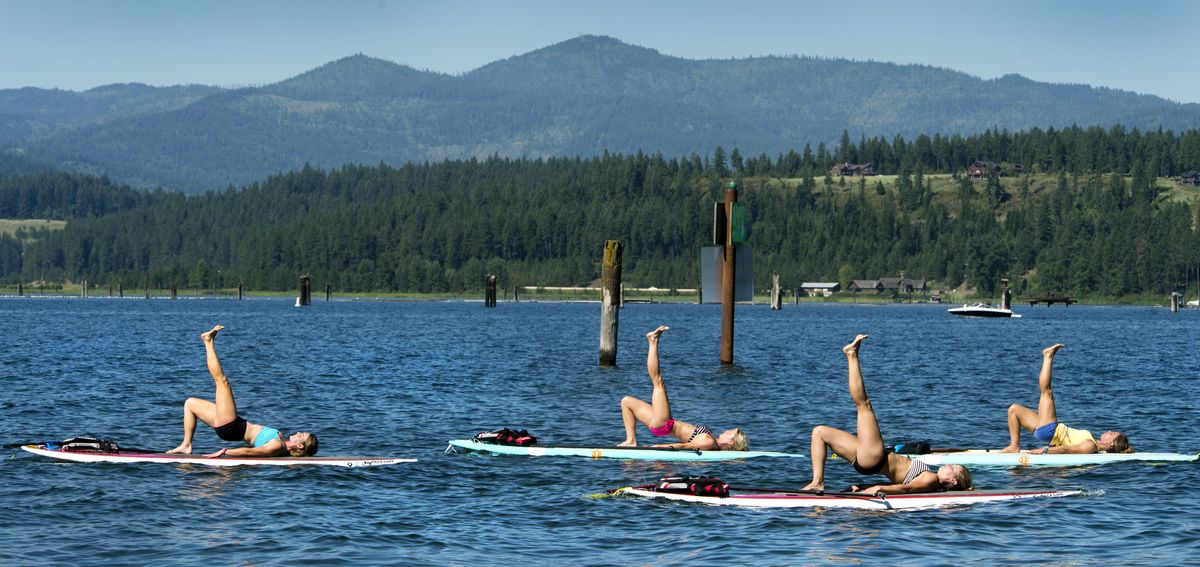Downward frog
Paddleboard yoga adds the extra challenge of balancing on water

Katie Fitzgerald’s yoga students, instructed to close their eyes and notice their surroundings at the start of a class last week, had much to be mindful of.
The gentle breeze. The warm sun. The calling birds.
The speeding boats. The buzzing seaplane. The water underneath, rocking their mats.
The fact that they were beginning a class afloat, four students and an instructor each perched on a stand-up paddleboard anchored 20 yards from shore, and that if they lost their balance and fell from a warrior pose or headstand – as did happen several times – it was into Lake Coeur d’Alene.
Luckily, the water was warm off the beach at North Idaho College. And the water was key to their practice for the day, a 90-minute session of stand-up paddleboard yoga, aka SUP yoga. Building on the growing popularity of stand-up paddleboarding, SUP yoga has been embraced by yogis looking for a new experience.
While Fitzgerald chose a calm setting for the recent morning class, the water added an extra challenge even as it contributed to a setting one student called “zenlike.” The gentle rise and falls of the approximately 12-by-3-foot boards – which varied according to the breeze and how fast the passing boats were moving – required extra attention to balance and center of gravity.
“It’s a lot of core strength,” Fitzgerald said before the recent class. “It’s a much deeper focus, a really deep focus on the breath.”
She’s also noticed normally serious students adjust their mental approach to their practice when they’re on the water.
“Their ego lessens, because they’re like, ‘OK, I might fall in. Oh, well,’ “ Fitzgerald said. “I see people let go more on the board.”
Trained in several styles of yoga, Fitzgerald teaches vinyasa, or flow, yoga on the boards. She said she strives to maintain a “yoga class vibe,” even in the nontraditional studio.
“It’s all about bringing that unity of mind, body and spirit – and adding that element of the water,” she said.
She starts class slowly, letting students gain confidence on their paddleboards before moving into more challenging poses.
The four students in the recent class moved from a sitting position to their hands and knees and then to downward dog – a basic pose that looks like an upside-down V, with hands and feet on the boards and tailbone skyward.
By the end of the class, they were attempting inversions – headstands – and tumbling into the lake with growing frequency.
“It’s a little nerve-wracking at first,” said Jenni Niemann, 31, of Spokane, after the students lifted their anchors and paddled back to shore. “You just have to accept that you may fall in.”
Amy Gates, 38, of Coeur d’Alene, said she’s been teaching yoga for 10 years and recently picked up paddleboarding. While she’d never put the two together before Fitzgerald’s class, it sounded like a good fit to someone who considers yoga a spiritual practice and water its own sacred space.
“You put sacred space on sacred space, and it’s just really cool,” Gates said.
Even falling into the water seemed like a natural part of her practice, she said: “I slipped into the water in the most peaceful way. It was this peaceful plunk.”